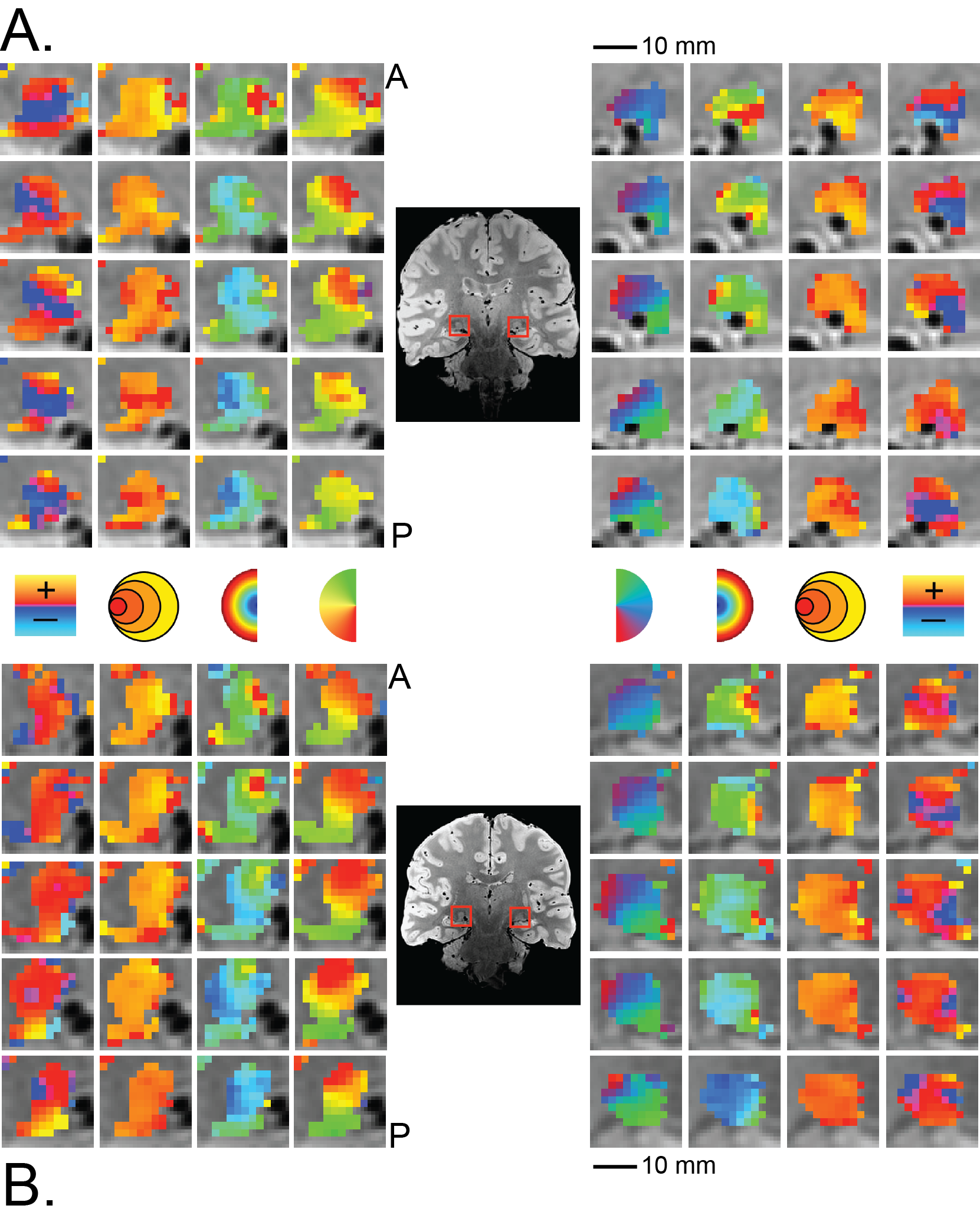What is a population receptive field?
A population receptive field (pRF) is a quantitative model of the cumulative response
of the population of cells contained within a single fMRI voxel . The pRF model can
be used to estimate the response properties of populations of neurons using other measures, such
as EcOG and EEG .
The pRF model allows us to interpret and predict the responses of a voxel to different stimuli.
Such models can be designed to describe various sensory and cognitive processes. More
recently, we have used the pRF model to map the retinotopic organization of multiple subcortical
nuclei .
Below are parameter maps detailing the response properties of the human lateral geniculate nucleus (LGN).
The model parameter estimates are overlaid on the PD image for the left and right LGN. Separate subjects are
shown in A and B. Columns illustrate the polar angle, eccentricity, pRF size, and HRF delay estimates. A, anterior; P, posterior.

References
